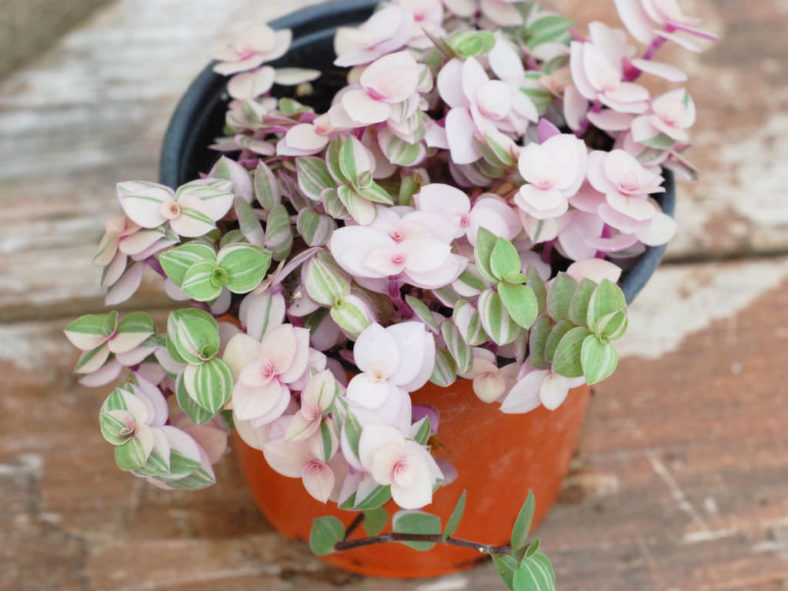Scientific Name
Callisia repens 'Pink Lady'
Common Name(s)
Turtle Vine, Inch Plant, Creeping Inch Plant, Creeping Basket Plant, Bolivian Jew
Synonym(s)
Callisia repens 'Pink Panther', Callisia repens 'Pink Turtle', Callisia repens 'Bianca', Callisia repens 'Tango', Callisia repens 'Tricolor'
Scientific Classification
Family: Commelinaceae
Genus: Callisia
Origin
Callisia repens 'Pink Lady' is a variegated cultivar of Callisia repens.
Description
Callisia repens 'Pink Lady' is a low-growing succulent with stems that bear small, waxy, attractively variegated leaves. It can grow up to 4 inches (10 cm) tall. The leaves are heart-shaped to lance-shaped and can reach up to 1 inch (2.5 cm) in length. They can be green-striped, pinkish, or cream with a burgundy underside.
The flowers are small, white, and appear in late spring or early summer.

Hardiness
USDA hardiness zones 10a to 11b: from 30 °F (−1.1 °C) to 50 °F (+10 °C).
How to Grow and Care
Growing Tradescantia is easy, and you will find the plants quite resilient. These plants typically grow in moist, well-drained, and acidic (pH 5 to 6) soil. Tradescantias do best in partial shade but will do equally well in sunny areas as long as the soil is kept moist.
If suitable conditions are provided, Tradescantia can also be grown indoors. Provide the plant with a soilless mix or loam-based potting compost and keep it in bright, filtered light. Pinch out the growing tips to encourage bushier growth.
If feasible, allow it to spend warm spring and summer days outdoors. Water moderately during active growth and apply a balanced liquid fertilizer every four weeks. Water sparingly in winter.
These plants like to be kept fairly moist, so water regularly, especially when growing in containers. Cutting the plants back once flowering has ceased can promote a second bloom and help prevent re-seeding. Cut the stems back about 8 to 12 inches (20 to 30 cm) from the ground.
See more at How to Grow and Care for Tradescantia.
Links
- Back to genus Callisia
- Succupedia: Browse succulents by Scientific Name, Common Name, Genus, Family, USDA Hardiness Zone, Origin, or cacti by Genus
Photo Gallery
Click on a photo to see a larger version.


